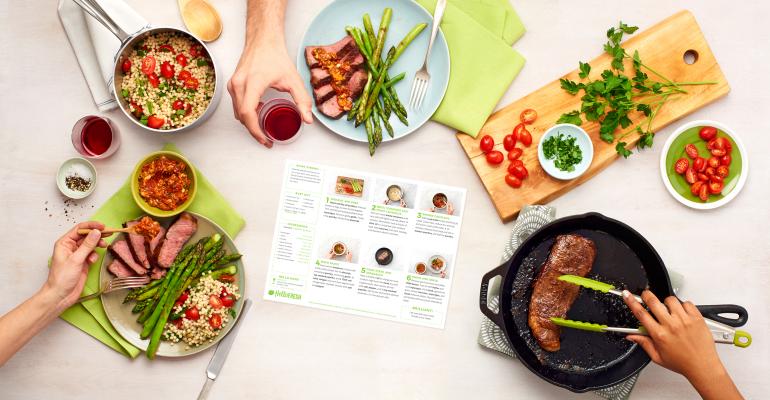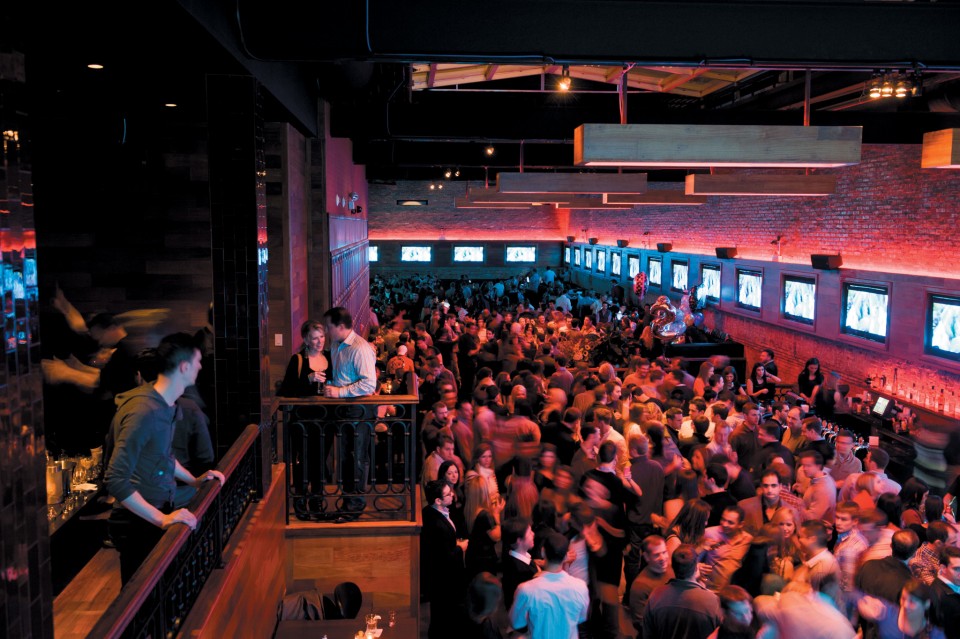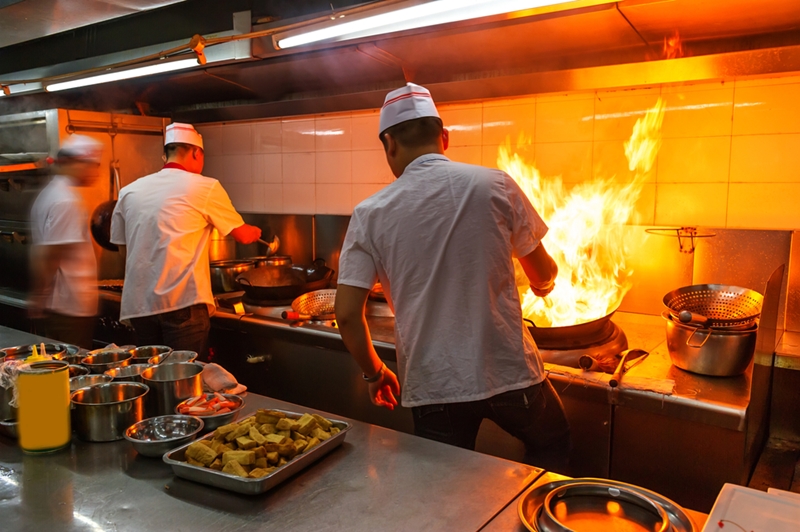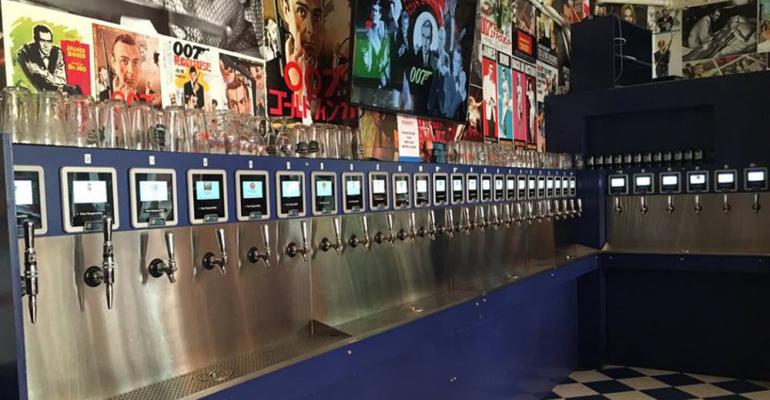
Oct 17, 2017
Lisa Jennings | Restaurant Hospitality | October 10, 2017
The already heated competition for butts in seats in the independent restaurant industry is about to get hotter. But the biggest threat to market share comes not from the restaurant down the street, but from outside the industry.
Restaurant operators may soon see themselves losing guests to the local grocery store offering cooked-to-order meals and table-service, along with a full bar.
At the same time, the young-but-full-of-potential meal-kit industry is also out to steal diners from restaurants, offering quality and unique ready-to-cook-dishes — often at a lower price — directly to consumers where they live.
And there’s potential cross over between the two. Grocery stores are also beginning to offer meal kits to appeal to the growing number of consumers who don’t know how to cook, or don’t want to.
This year e-commerce giant Amazon bought the specialty grocery chain Whole Foods Market, a move that has sparked a wave of speculation about how Americans will be enjoying the home delivery of all manner of fresh ingredients and pre-prepped meals in future.
Behind both of these trends is a common theme: Time-starved diners across the country are looking for convenience.
Consumers want to eat well, but the pull of the couch at home is strong. The one-stop shopping of the “grocerant,” and the home-delivered ready-to-cook meal kit give diners two more reasons to skip the neighborhood bistro.
In the spirit of knowing one’s enemy, here’s a look at the growing threat from grocery stores and meal kits.
Grocery stores get into the restaurant business
For years, restaurants have had to compete with grocery stores, with their in-store delis, rotisserie chickens and salad bars.
Last year, however, eating meals outside the home surpassed those eaten at home, and the grocery industry felt the jolt of a shift in consumer behavior.
In May, grocery spending grew just 2.6 percent year-over-year, compared with a 4.8 percent increase at restaurants, according to credit card company Visa’s Retail Spending Monitor.
Seeing that shift, grocery stores are looking for ways to increase foot traffic and win that spending back.
CONTINUE READING

Oct 13, 2017
David Matthews and Tanveer Ali | DNAinfo | October 11, 2017
RIVER NORTH — It could be last call for more alcohol in River North.
The City Council voted Wednesday to prohibit new liquor licenses in much of the neighborhood long known for its nightlife.
Citing an “over-concentration” of bars in the area, the new law introduced by 42nd Ward Ald. Brendan Reilly seeks to prohibit new watering holes in wide swaths of River North.
The ordinance only applies to new bars that make most of their money off booze, not other businesses such as hotels, restaurants or music venues that also sell drinks. Existing River North bars will not be affected.
Reilly, who didn’t return messages seeking comment, for years has told neighbors he frowns on granting tavern licenses to new bars that he said attract drunken mischief to River North.
Lilia Chacon, a spokeswoman for the city’s Department of Business Affairs and Consumer Protection, said there already are moratoriums in the ward with regard to bars, liquor stores and late-night clubs. Any liquor licenses recently granted in the ward have gone to restaurants and other businesses with incidental drink sales, she said.
A new ordinance would make those restrictions more permanent in River North.
“There is a delicate balance between residential, business, hospitality and tourism objectives in our very dynamic neighborhood,” Mike Riordan, president of the River North Residents Association, said in an email. “We work extremely hard to advocate for quality of life issues and to collaborate with business owners so that we all thrive. ”
CONTINUE READING

Oct 6, 2017
Brad Umansky | The Broker List | September 29, 2017
Are the restaurant and grocery industries a zero sum game? I believe so. Despite my desire to eat all day at different places, it is simply not possible for me or anyone else. As a result, any decision we make to consume food at one place means we are not eating at another place.
The good news for the food industry being a zero sum game is that it is also a game that everyone must play every day. You have to eat! That is why so many landlords love having food users as tenants because regardless of the economy, this industry is virtually guaranteed to capture consumers.
On the other hand, the bad news for the food industry being a zero sum game is that every food purveyor, including traditional grocery stores, specialty grocers, fast food restaurants, quick service restaurants, full service restaurants, farmer’s markets, food halls, etc. are ALL competing for their piece of the pie.
What does this mean for landlords and property owners?
CONTINUE READING

Sep 25, 2017
Tim Novak | Chicago Sun-Times| September 25, 2017
Welcome to Wrigleyville: Home of the world champion Cubs — and some of Chicago’s best deals on property taxes.
Take Casey Moran’s, one of the most popular bars in the booming neighborhood.
Two years ago, Cook County Assessor Joseph Berrios reclassified Casey Moran’s from commercial to residential property after its owner, Kevin Killerman, created a tiny apartment above the bar. That drastically cut Killerman’s property taxes by 60 percent, saving him more than $110,000 so far.
A block away, Berrios similarly has classified a two-story bar called Trace as residential property, even though a bartender there says there aren’t any apartments on the property. That’s saved its owners more than $17,000 in property taxes this year.
And the Ricketts family, owners of the Cubs and Wrigley Field, have saved hundreds of thousands of dollars in taxes on 10 apartment buildings known as Wrigley Rooftops. All are classified as residential property — even though their rooftop bleacher businesses generate far more revenue than their residences, records show.
Around Wrigley Field, bars and restaurants compete for customers. But when it comes to property taxes, they operate on an uneven playing field, a Chicago Sun-Times investigation has found.
Cook County is the only county in Illinois that taxes residences less than commercial property. That tax break is extended to thousands of buildings that include both businesses and apartments, resulting in lower tax bills for their owners — while forcing the rest of the county’s taxpayers to pay more.
CONTINUE READING

Sep 19, 2017
Liz Barrett | Restaurant Hospitality | September 11, 2017
Today’s consumer loves convenience and new experiences, which is exactly what a self-serve beverage system delivers.
Access to a variety of alcoholic beverages when and where guests want them minus the wait time seems like a win-win for everyone. But is it right for your restaurant?
The average self-serve beverage system works like a vending machine with a loadable card or wristband. Customers can either pre-pay, setting their own limit, or start a tab and pay at the end of their visit. A simple swipe of their wristband, or insert of their card, allows them to purchase beverages by the ounce — typically one, five or eight ounces at a time.
At JJ’s Wine Bar (above) in Franklin, Tenn., 28 different wines are available to self-pour by using a smart card. JJ’s co-owner Lisa Judd said in addition to trying wines they may not otherwise order from a wine list, guests using the self-serve system can take their time reading the wine descriptions and labels before making a decision.
“Guests can taste a very expensive wine, without committing to the entire bottle,” Judd said. “We’re able to offer three pour sizes: one ounce, five ounce and eight ounce; you won’t find that on most wine lists.”
CONTINUE READING





